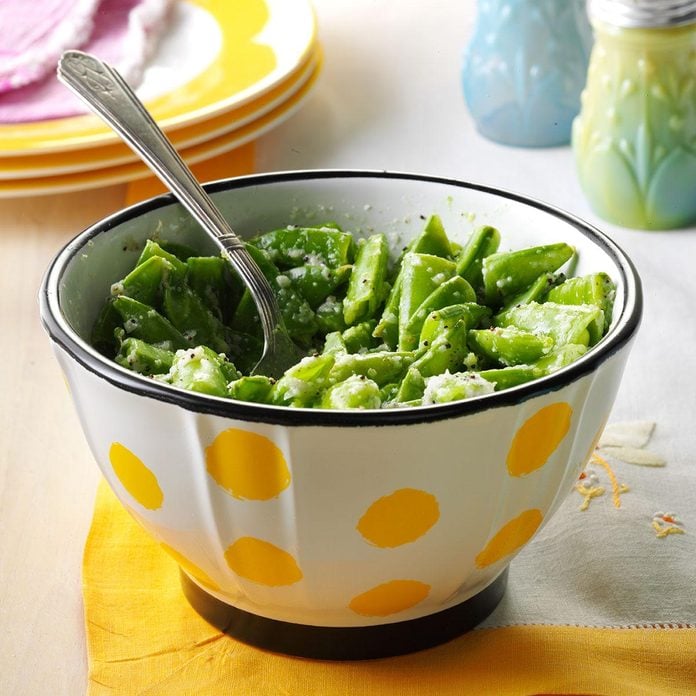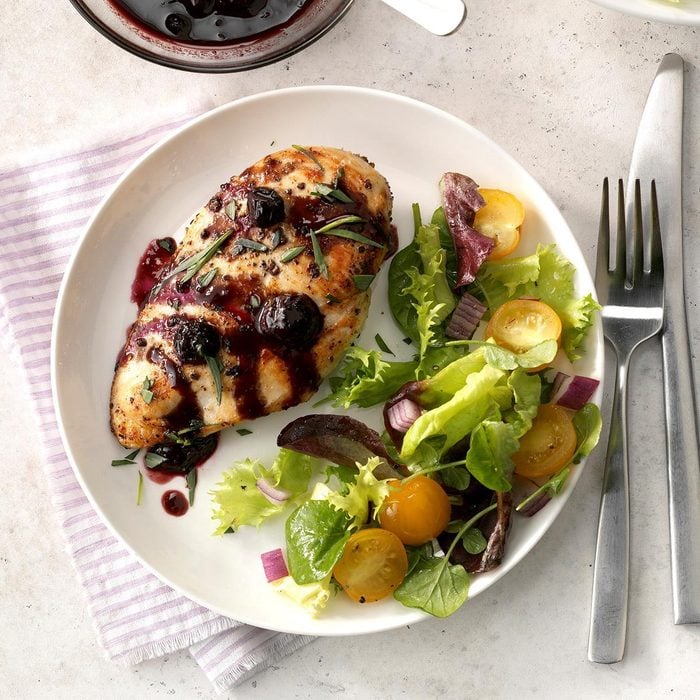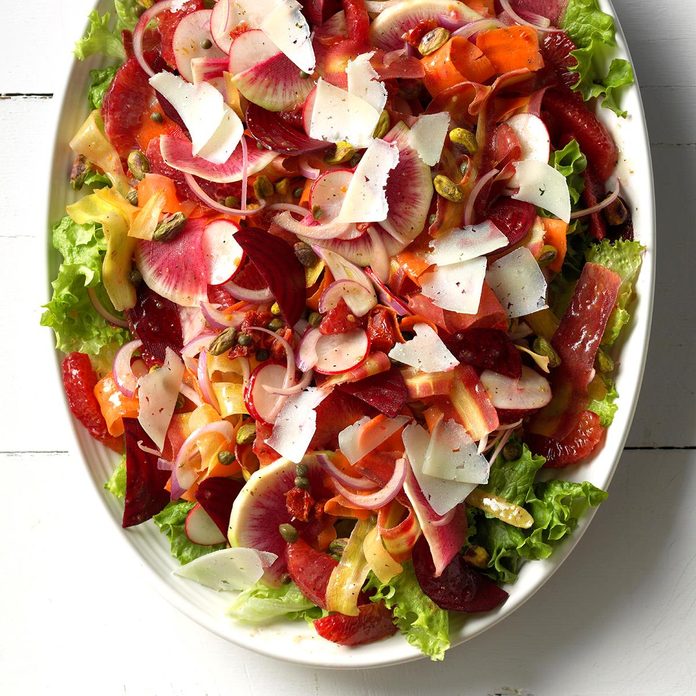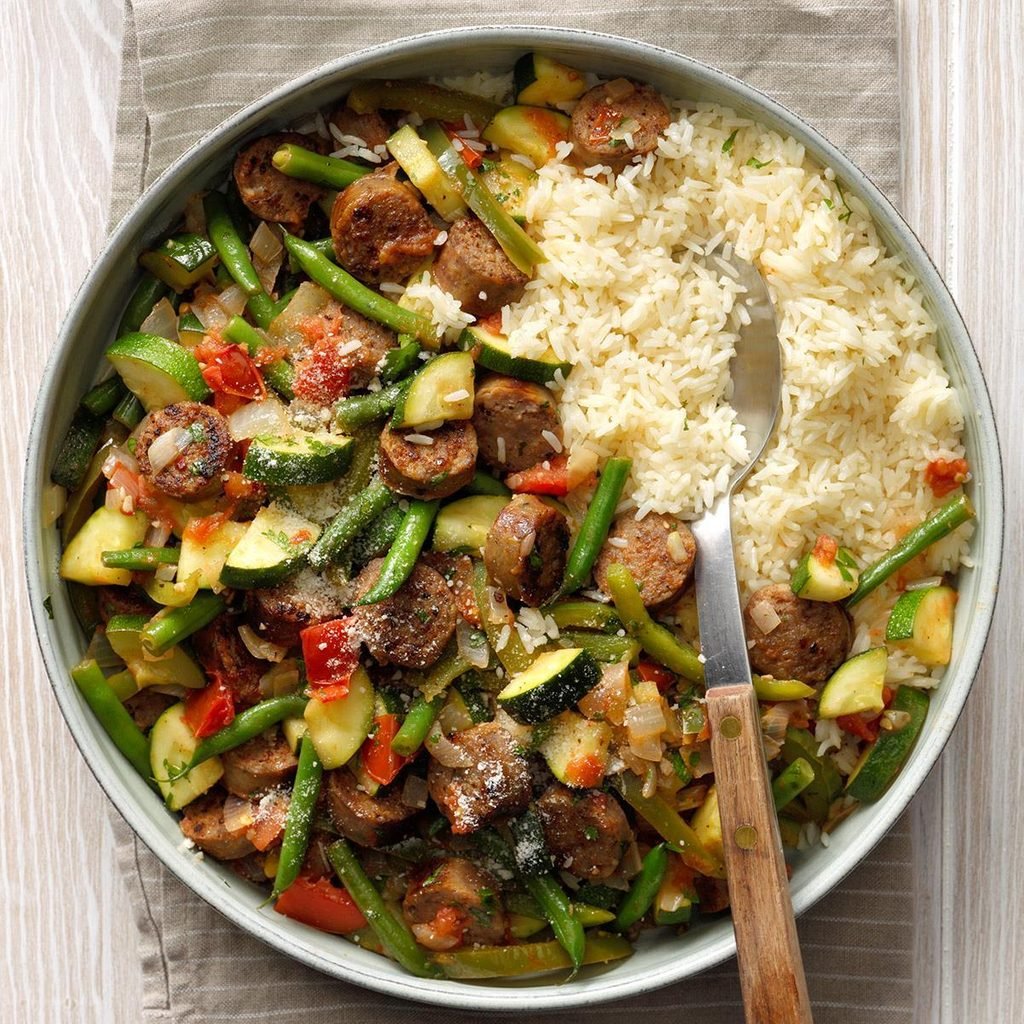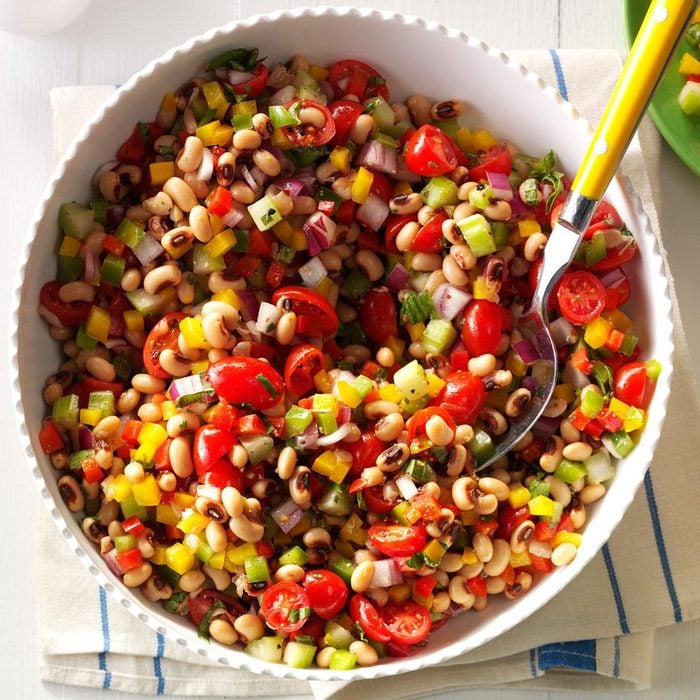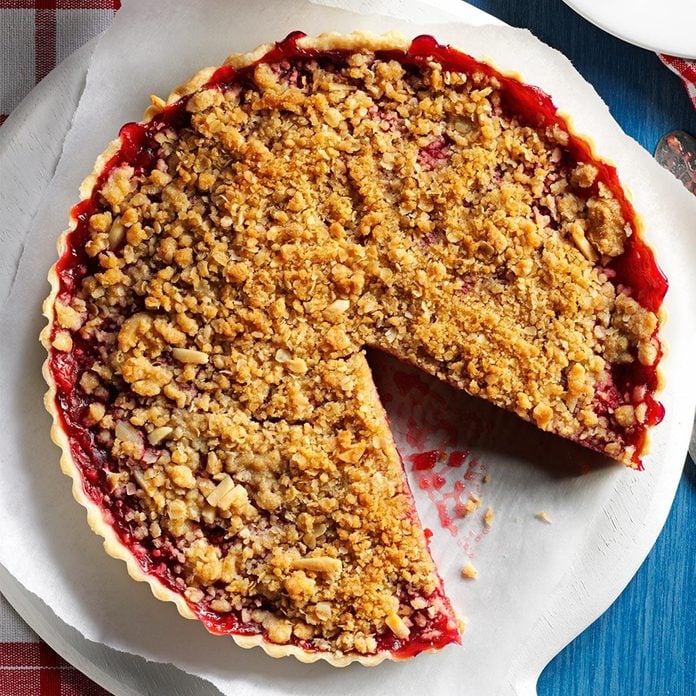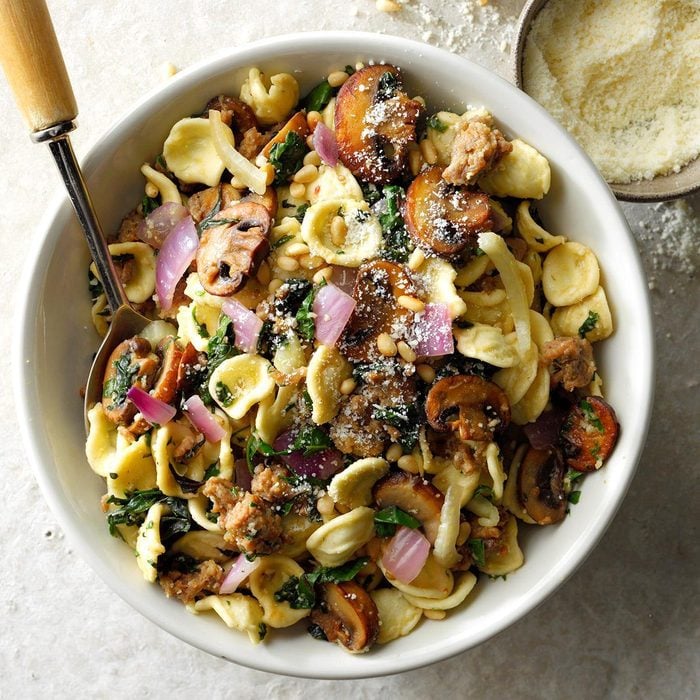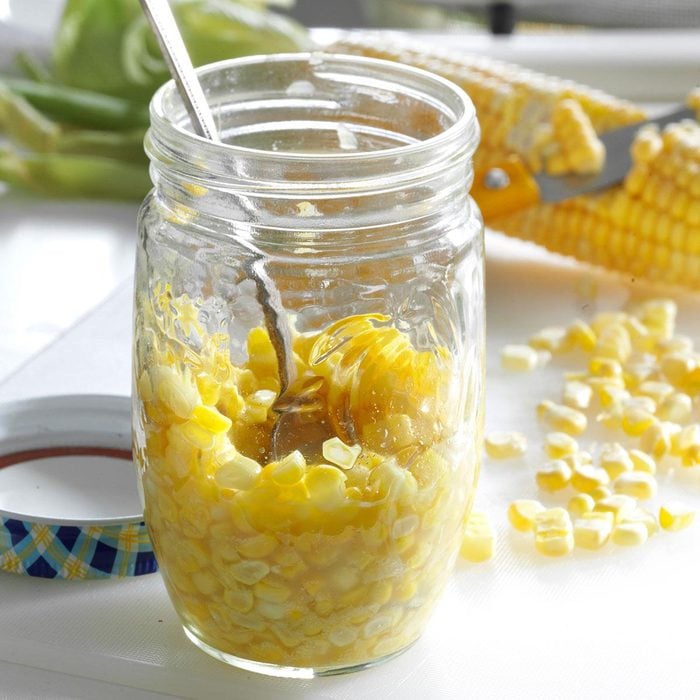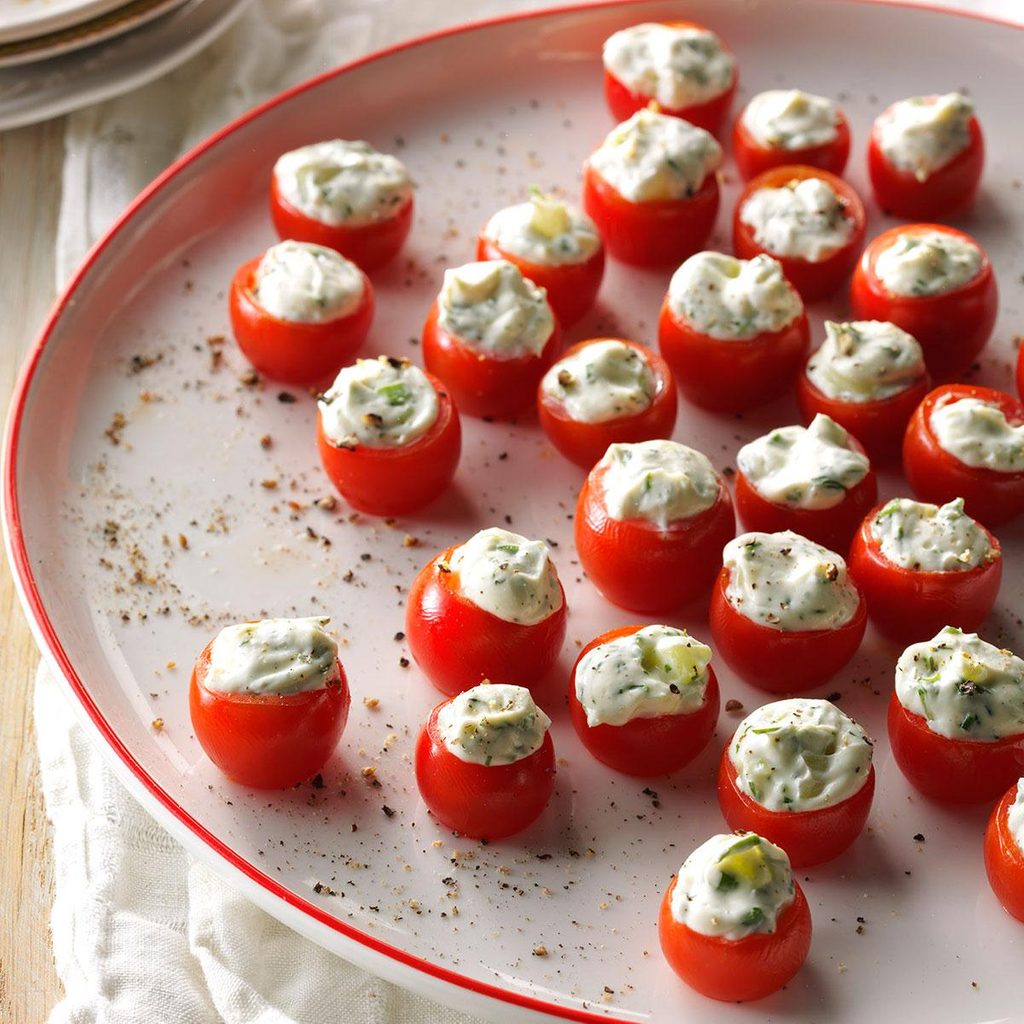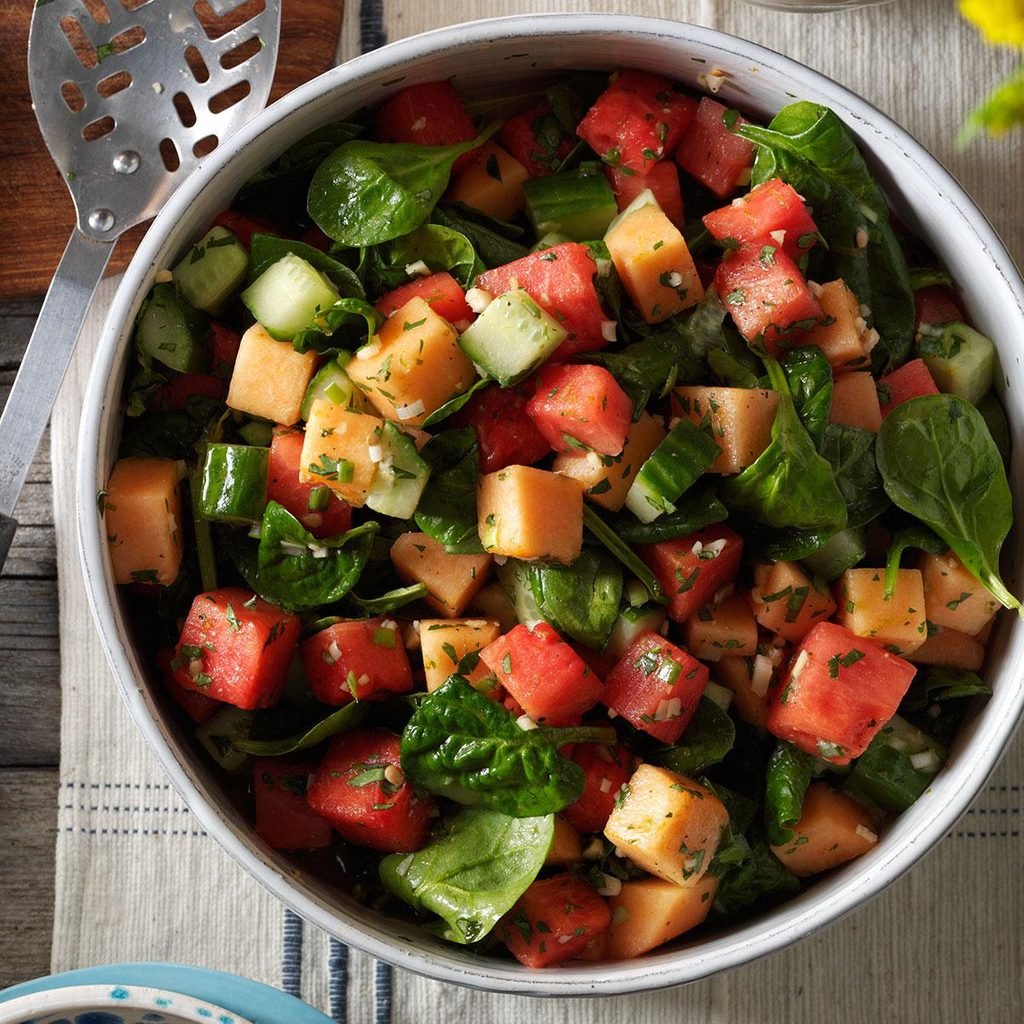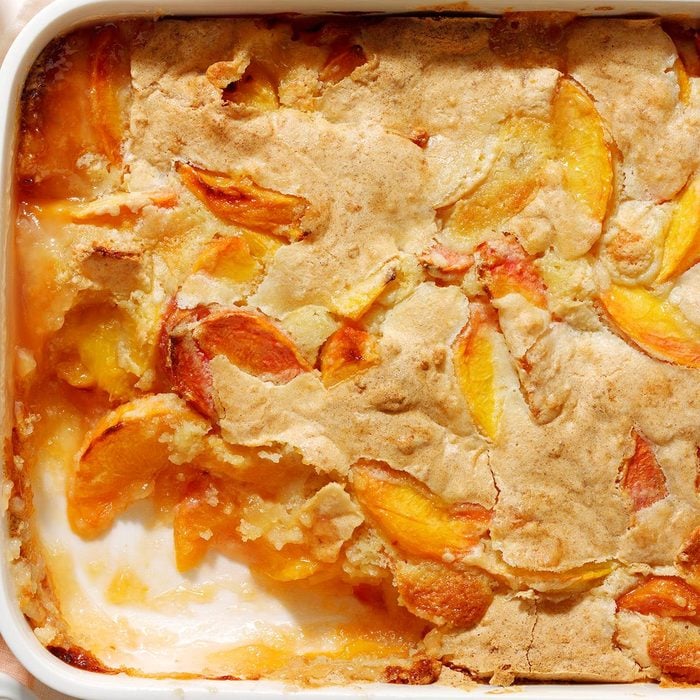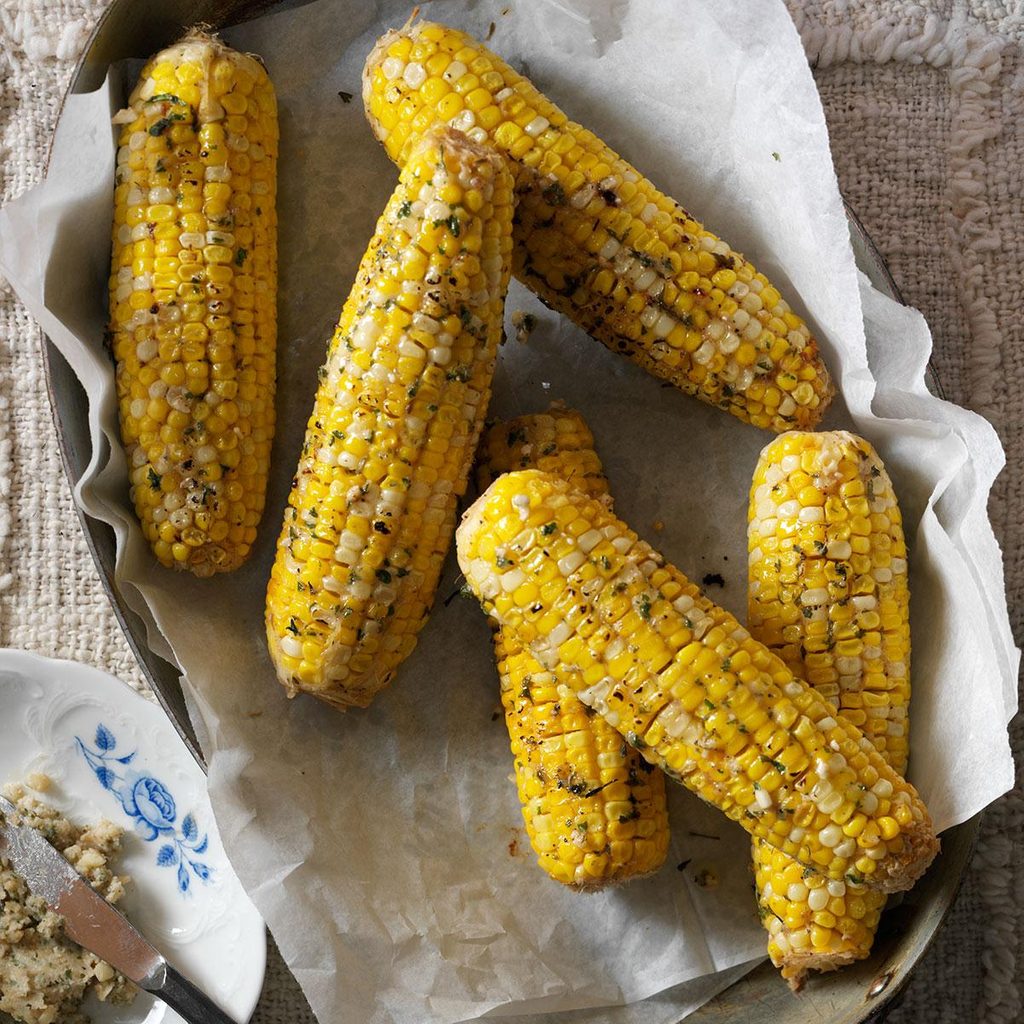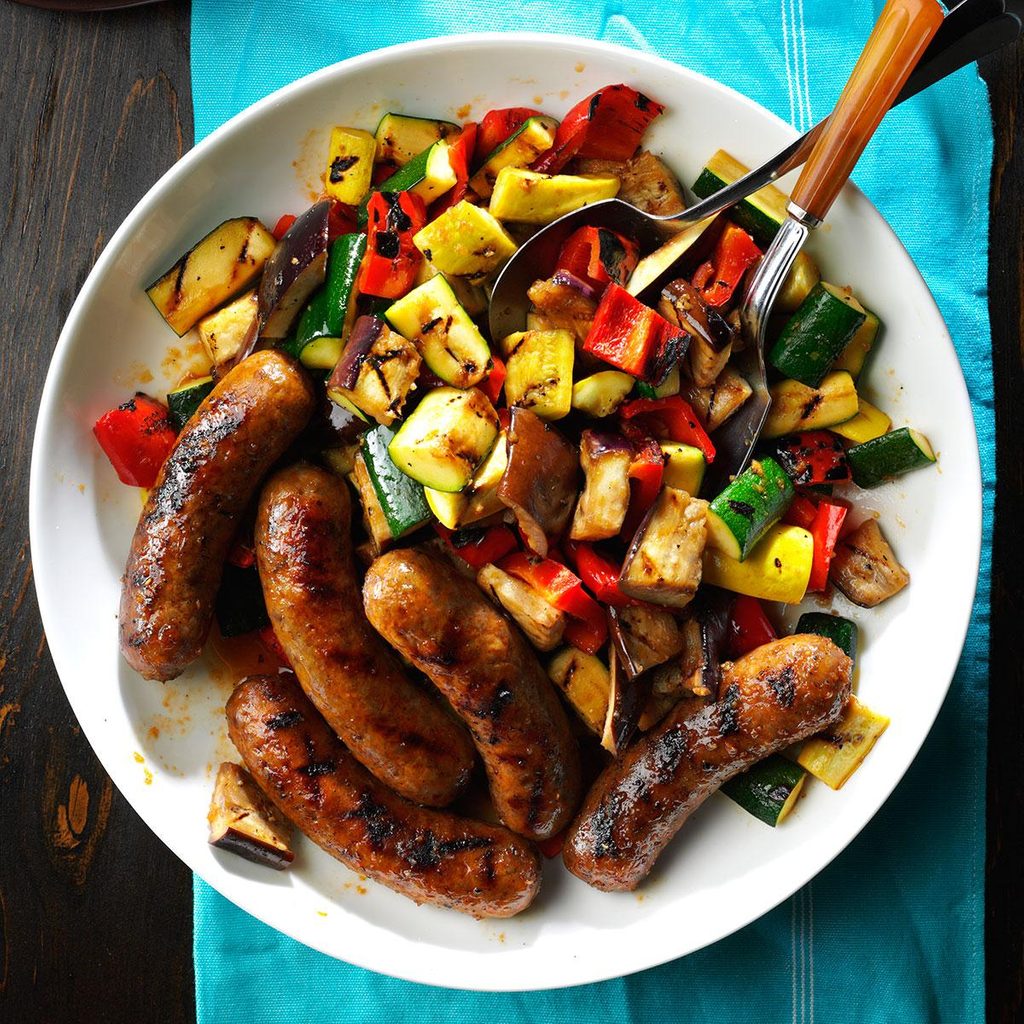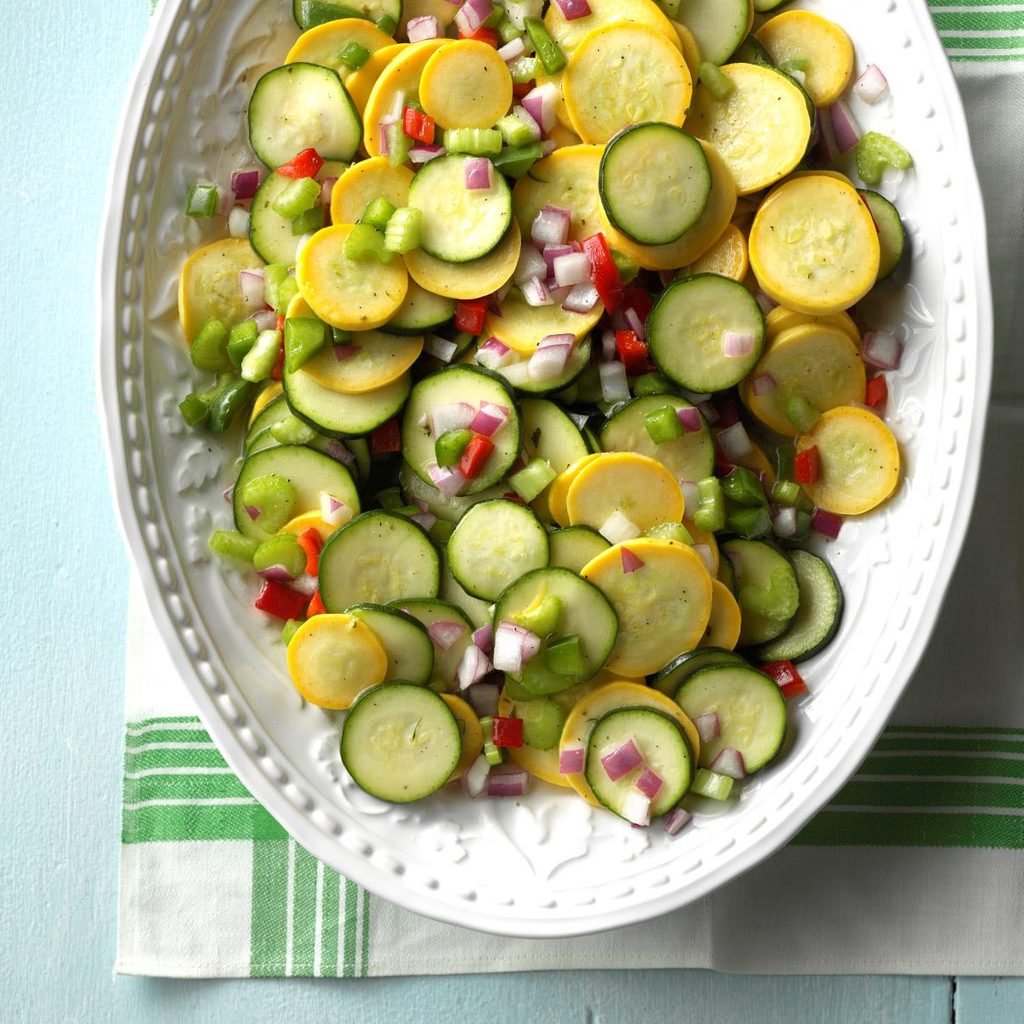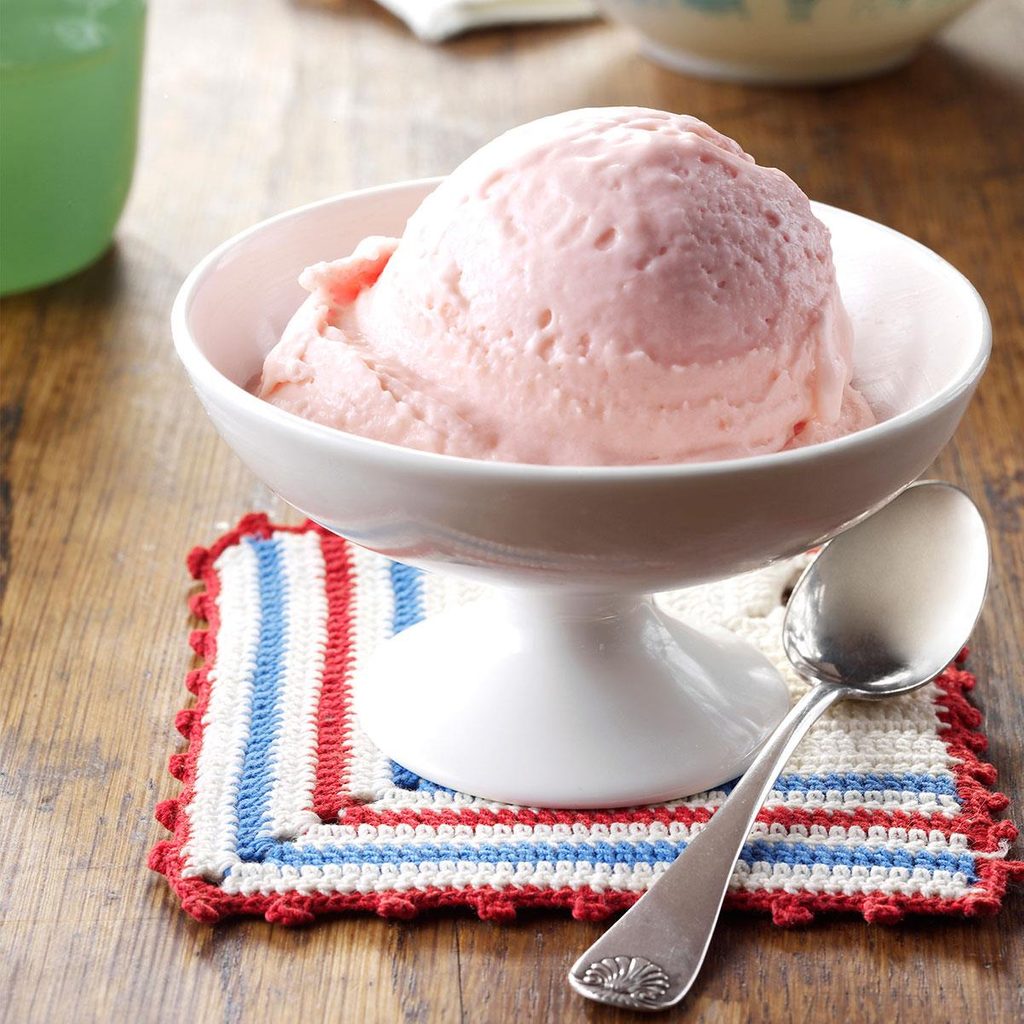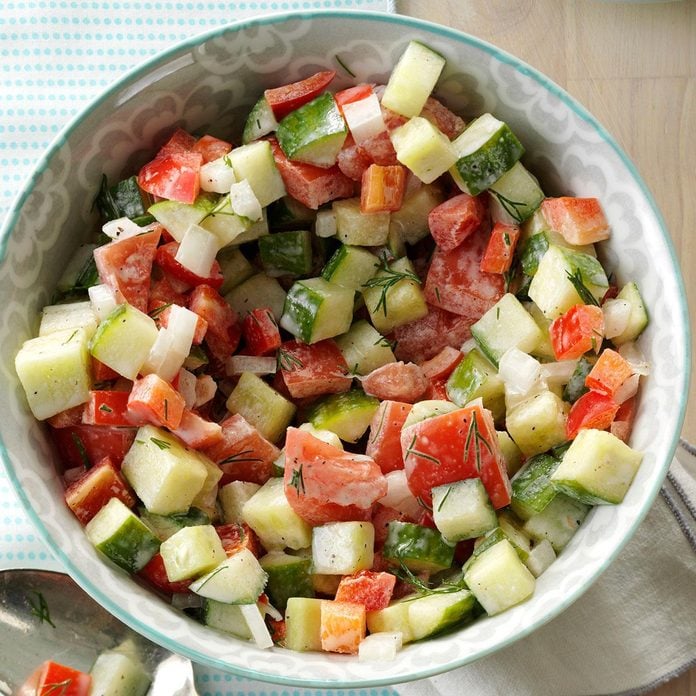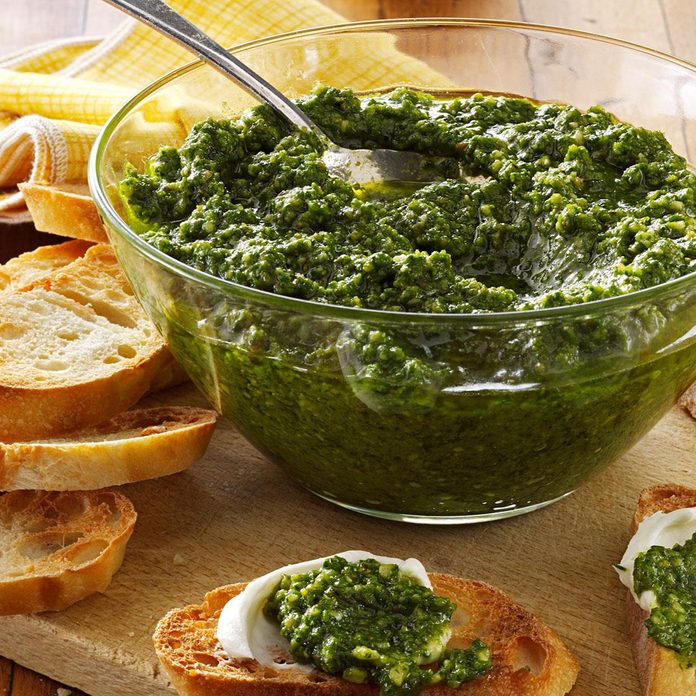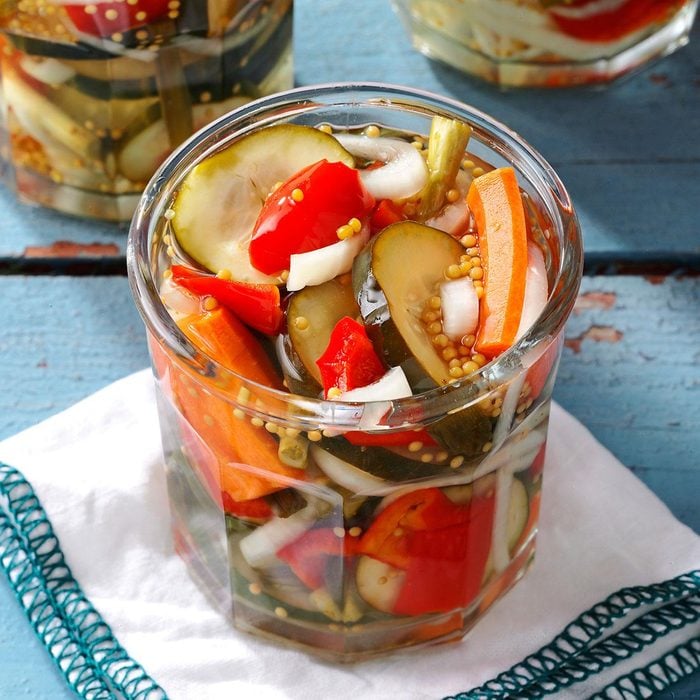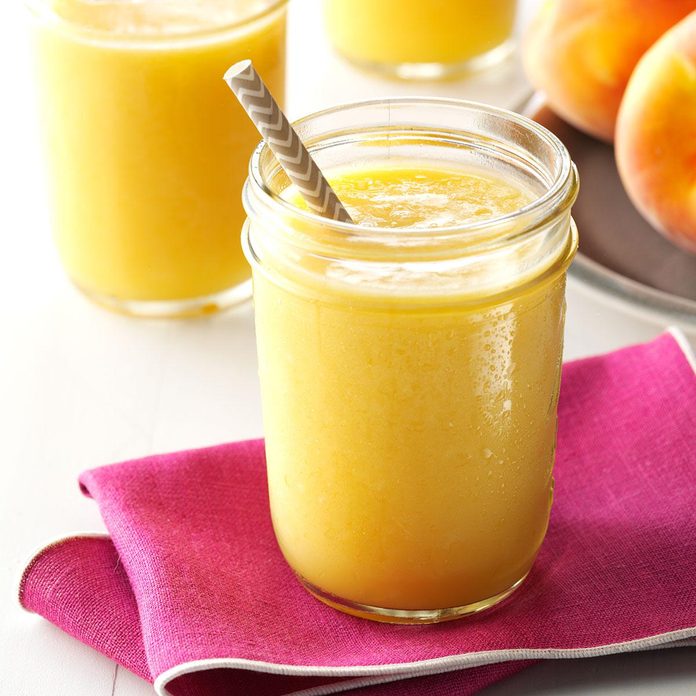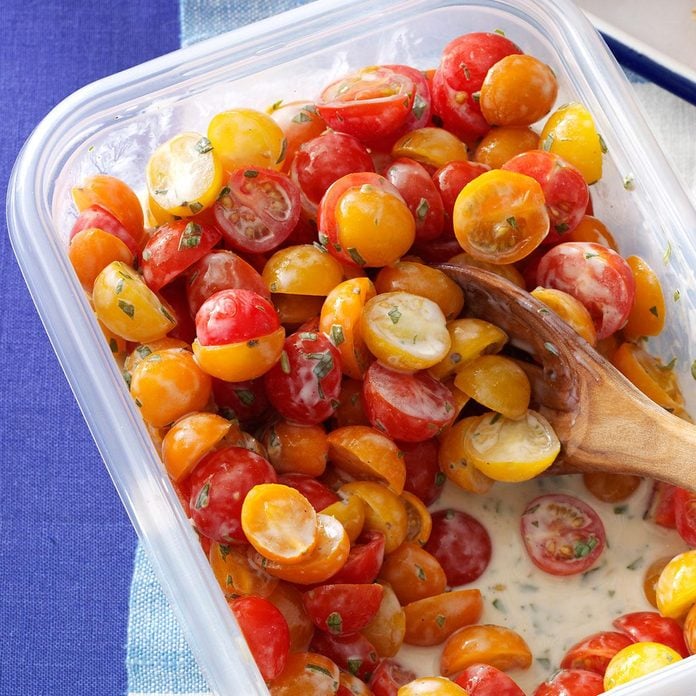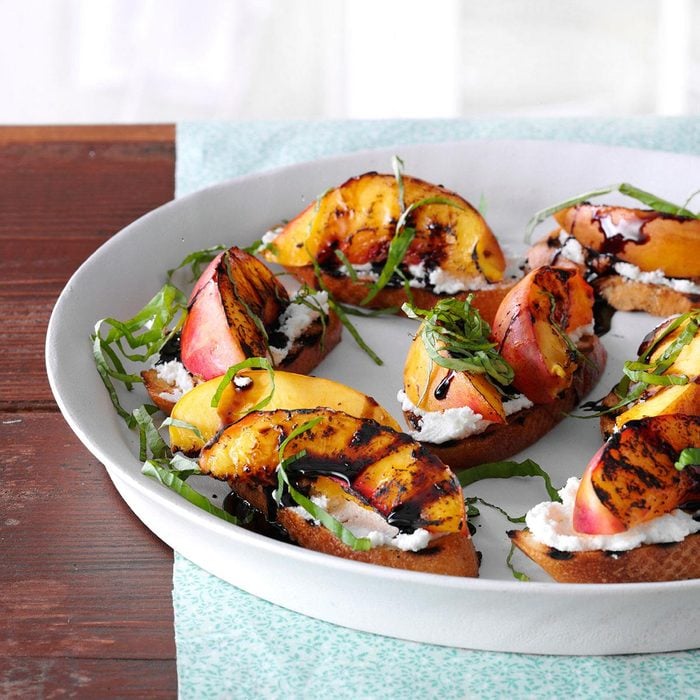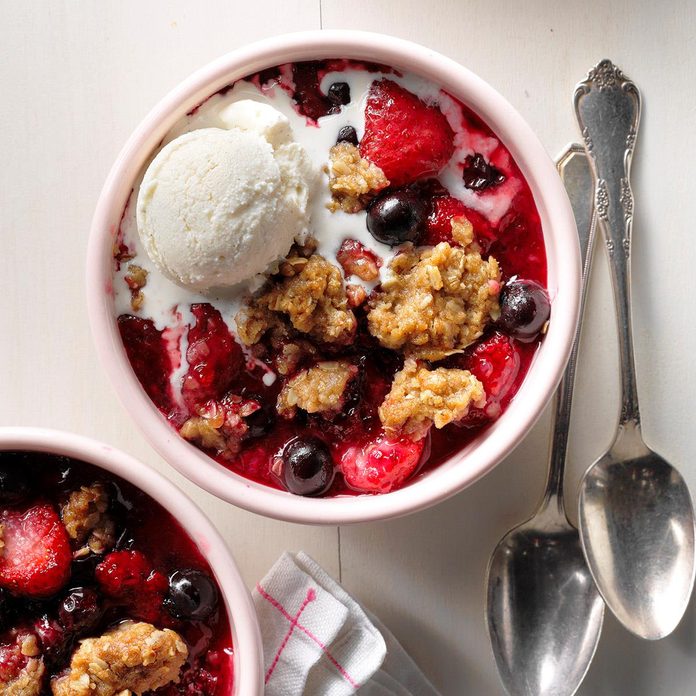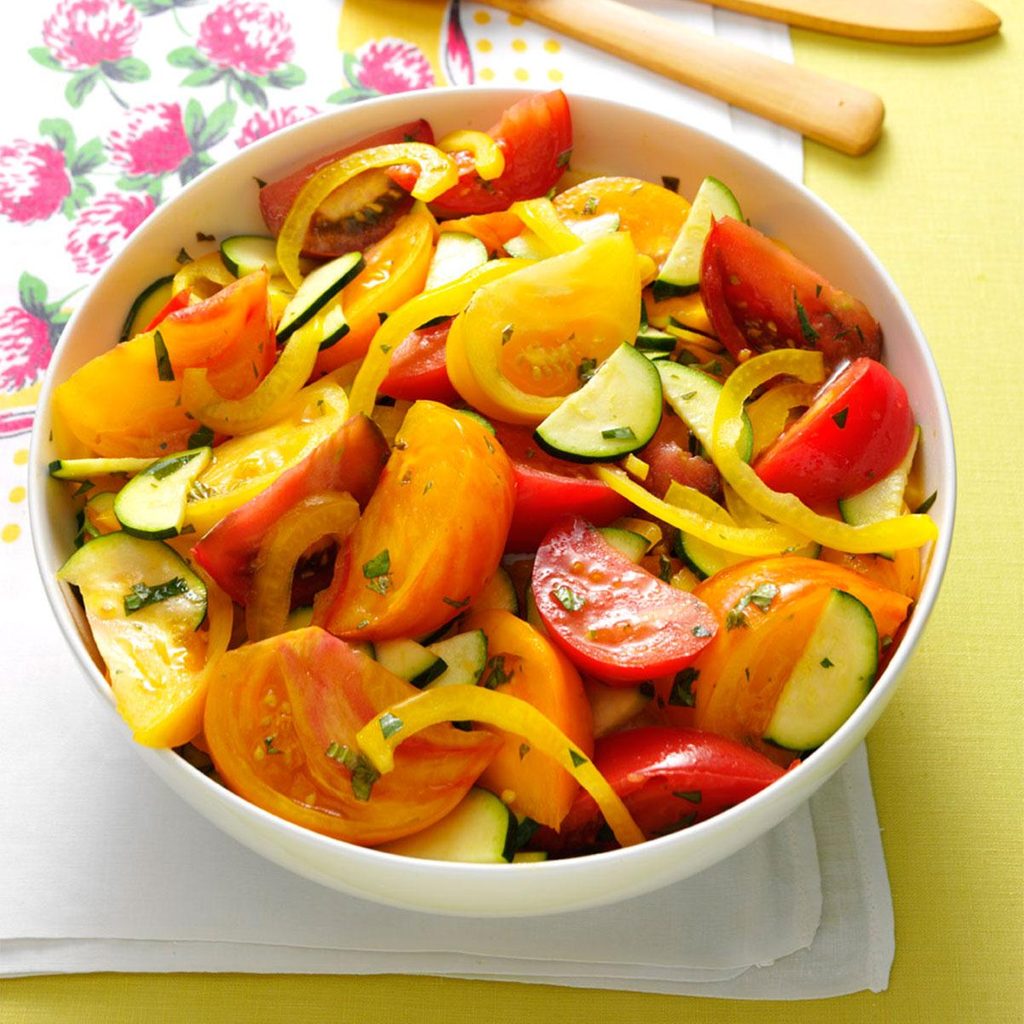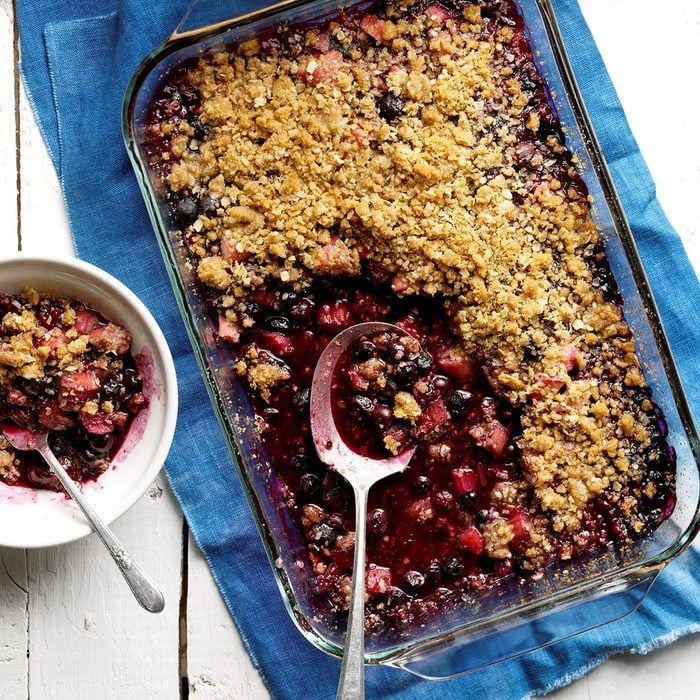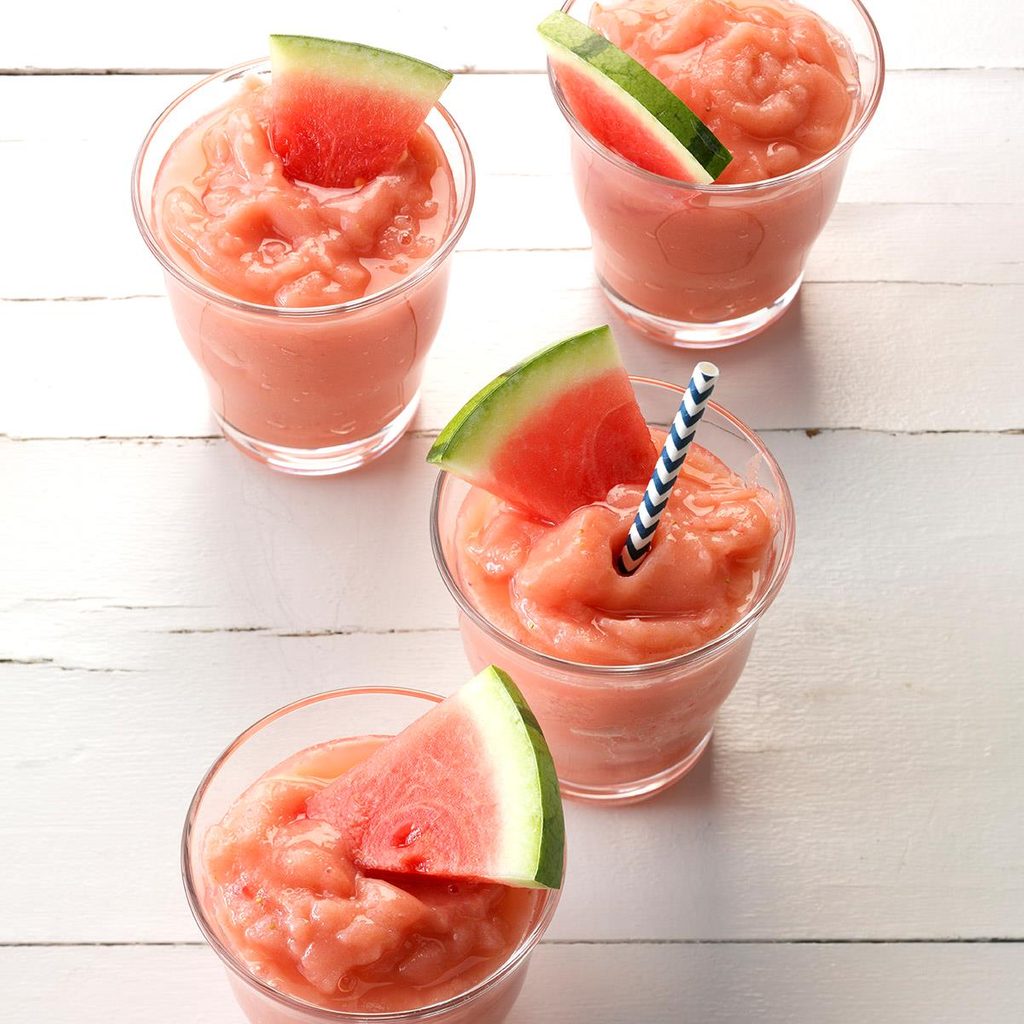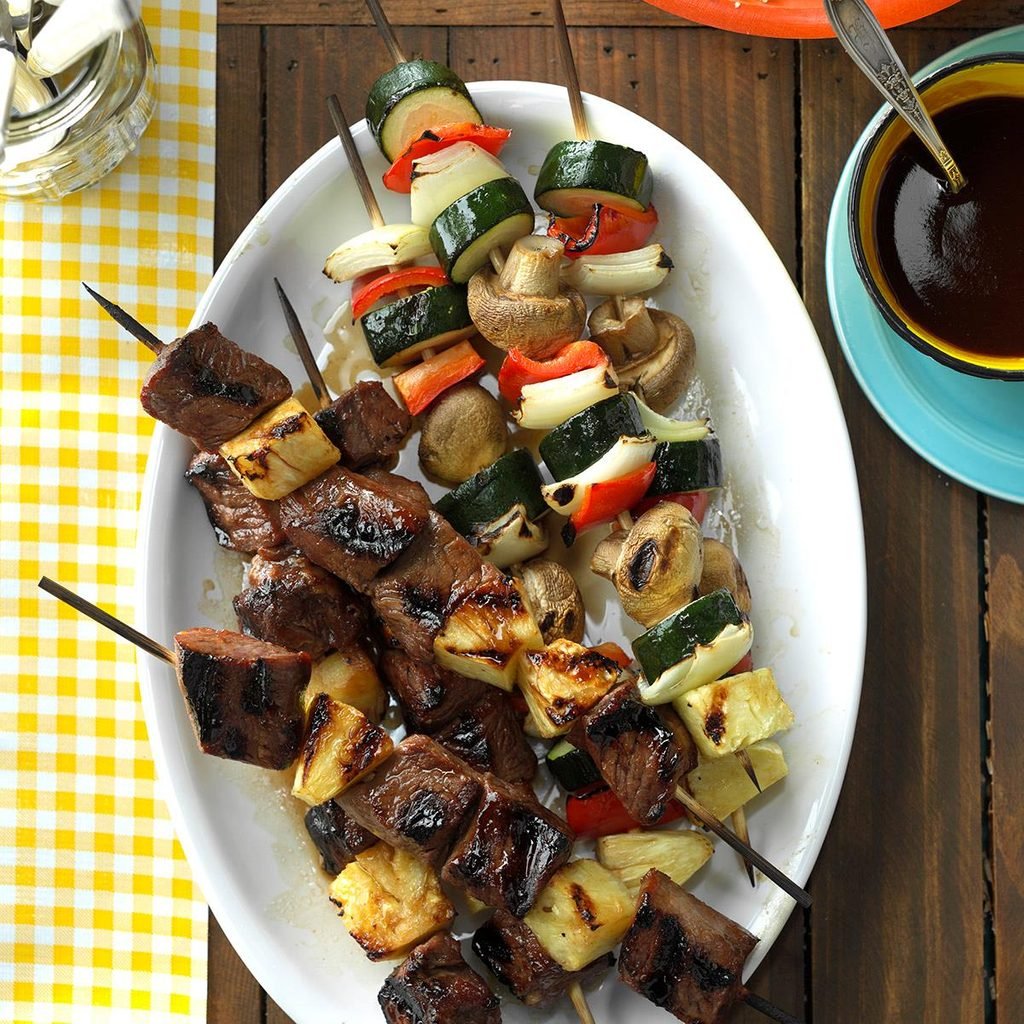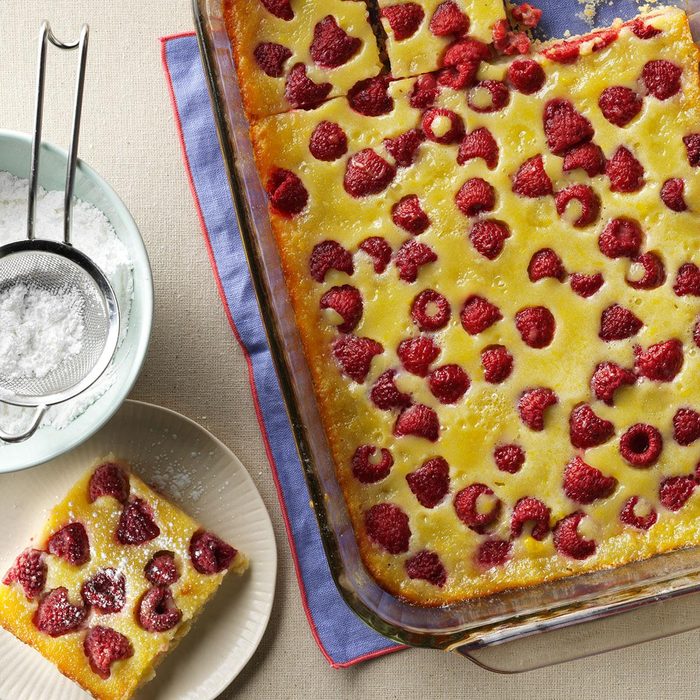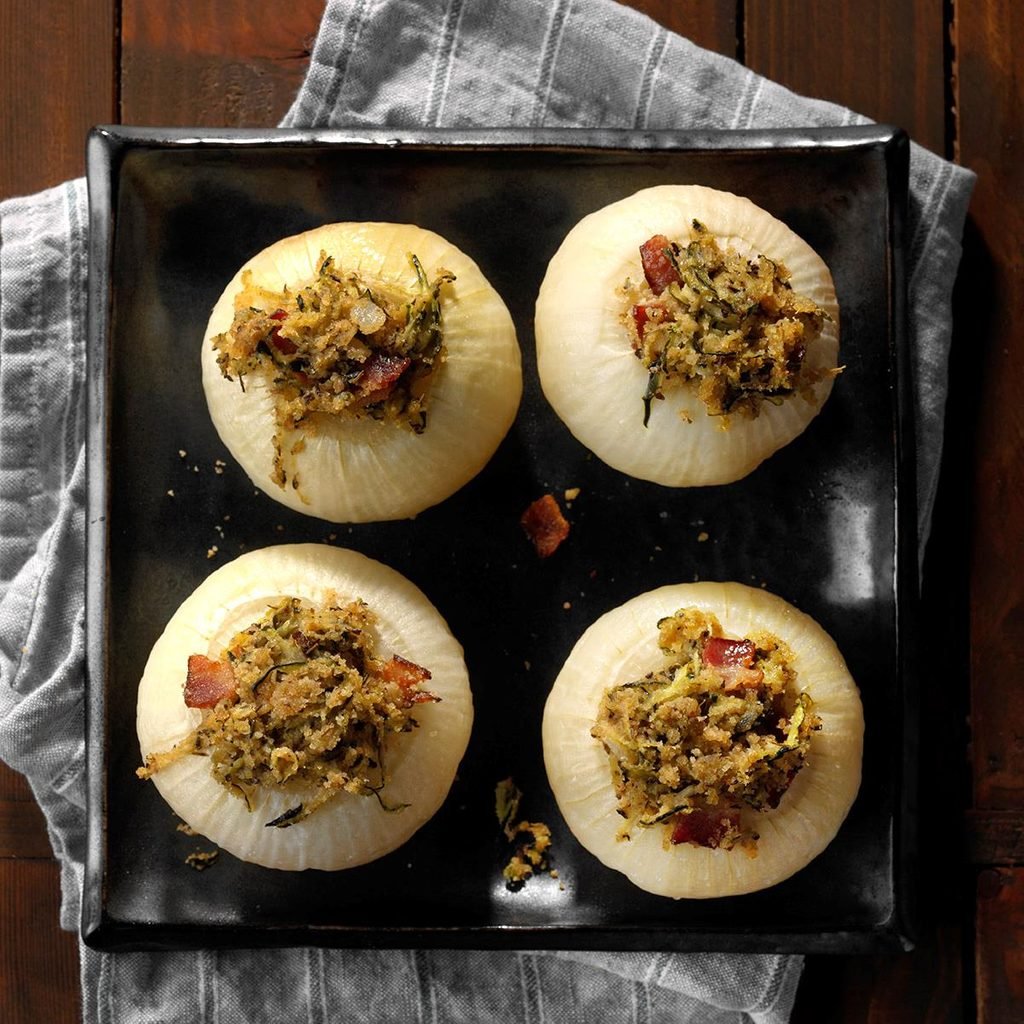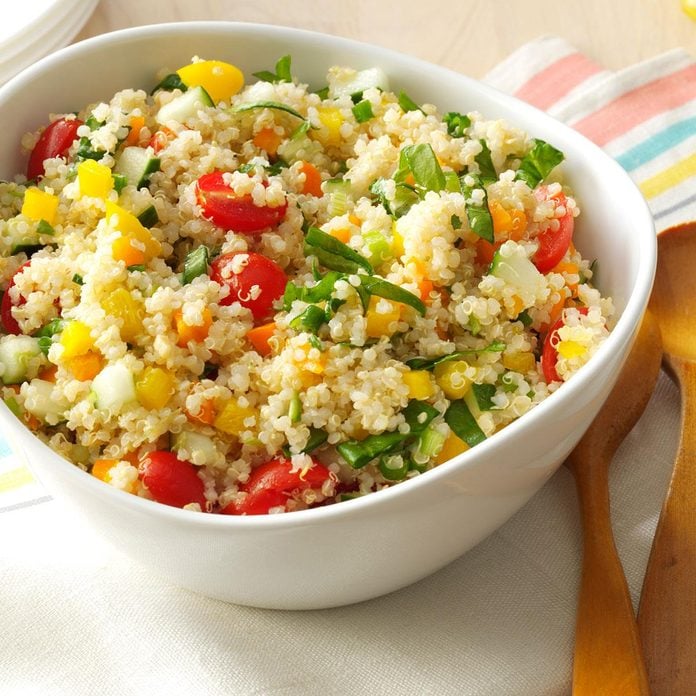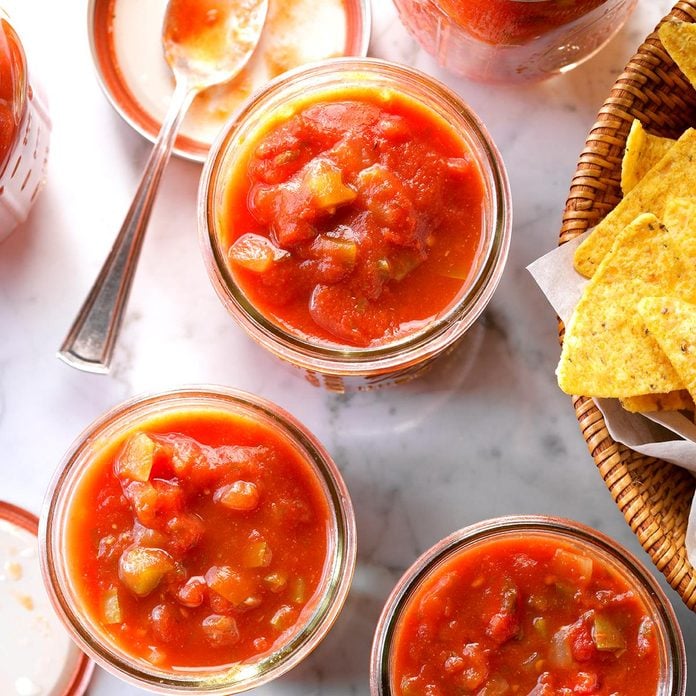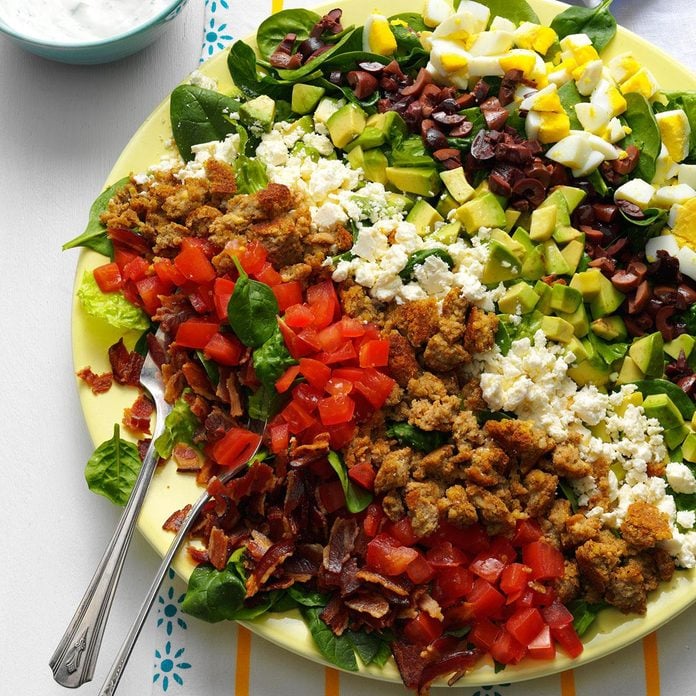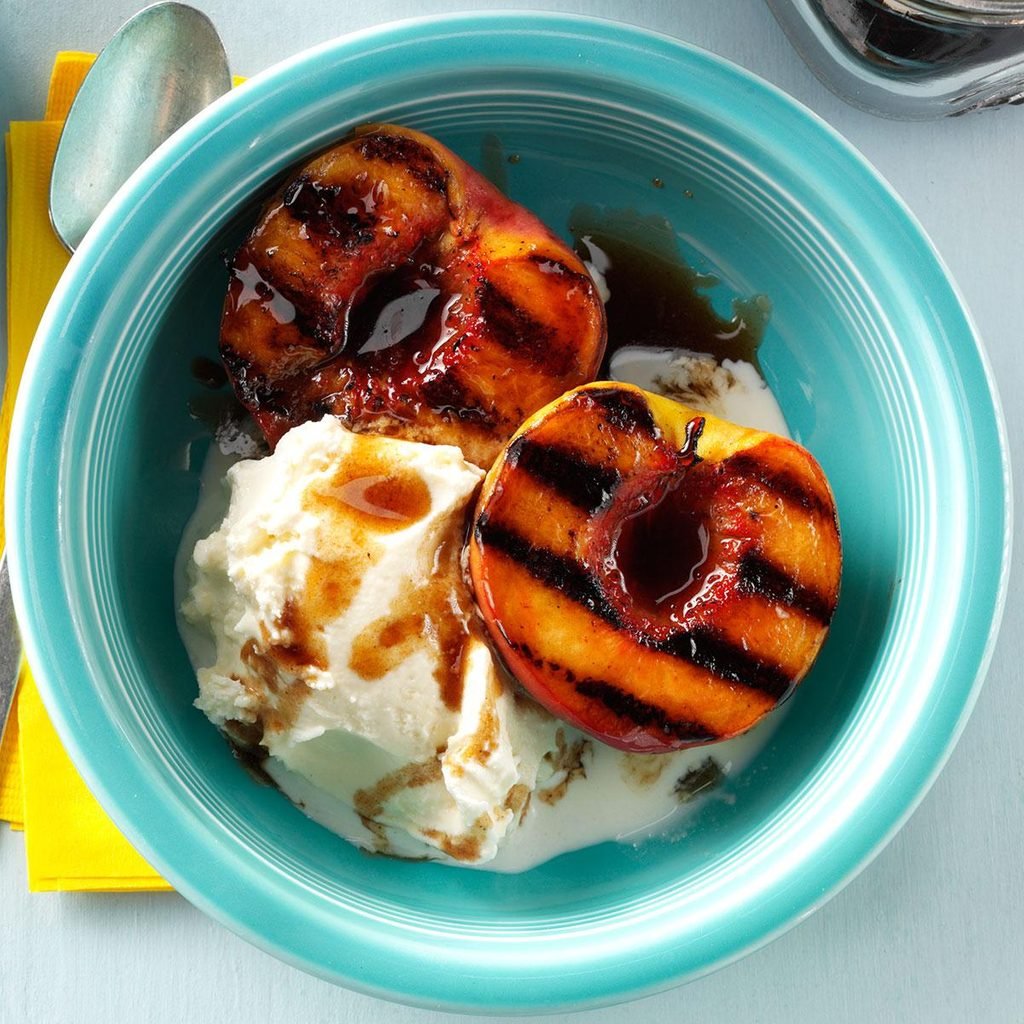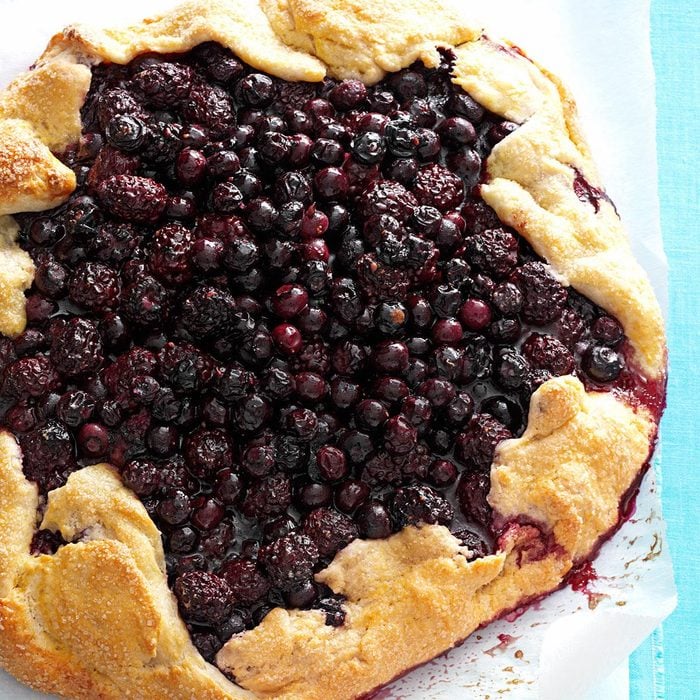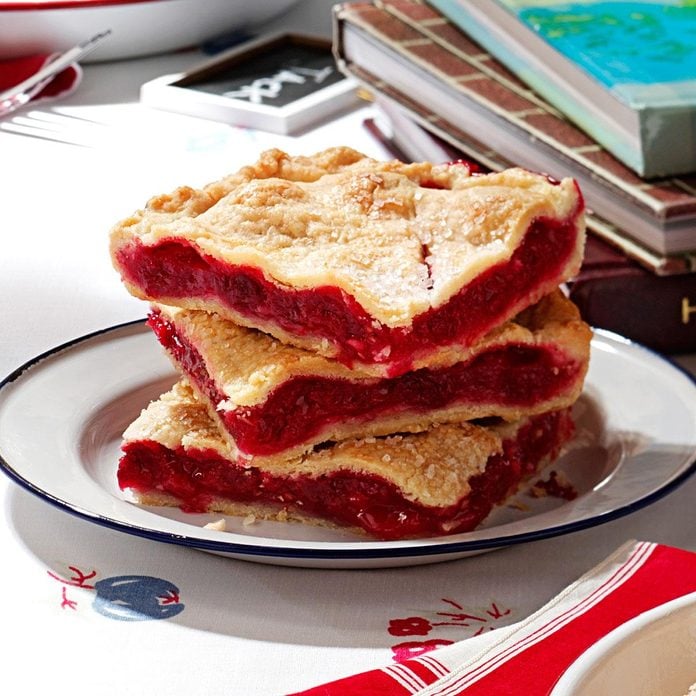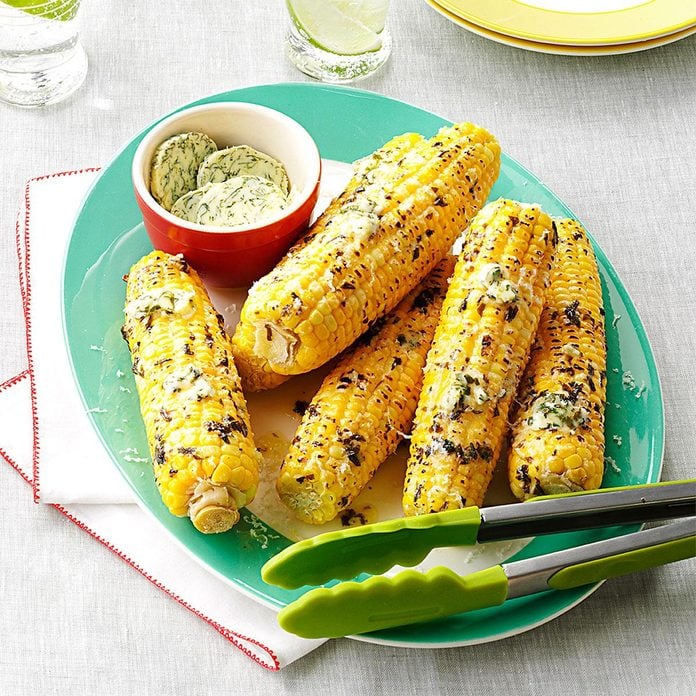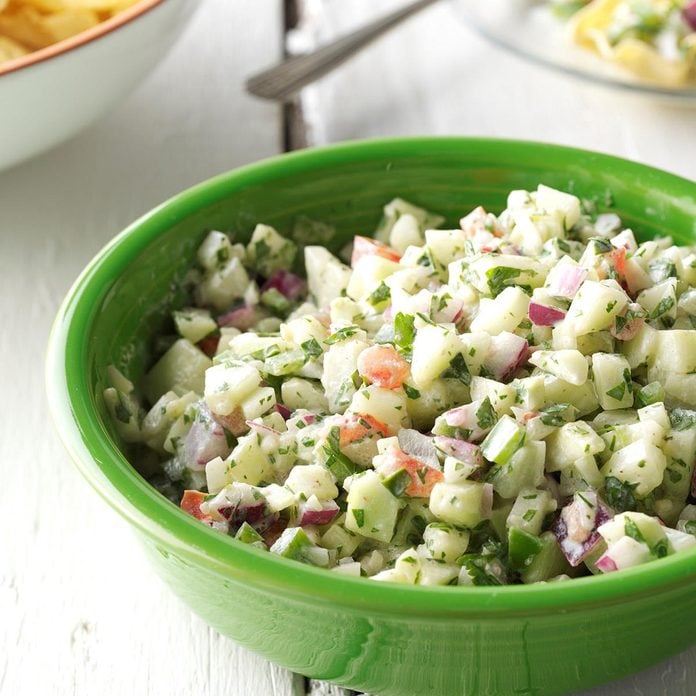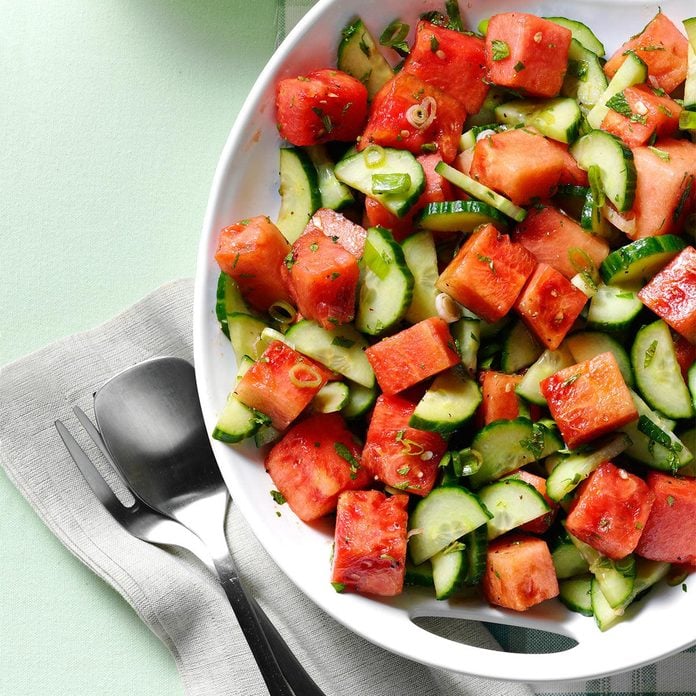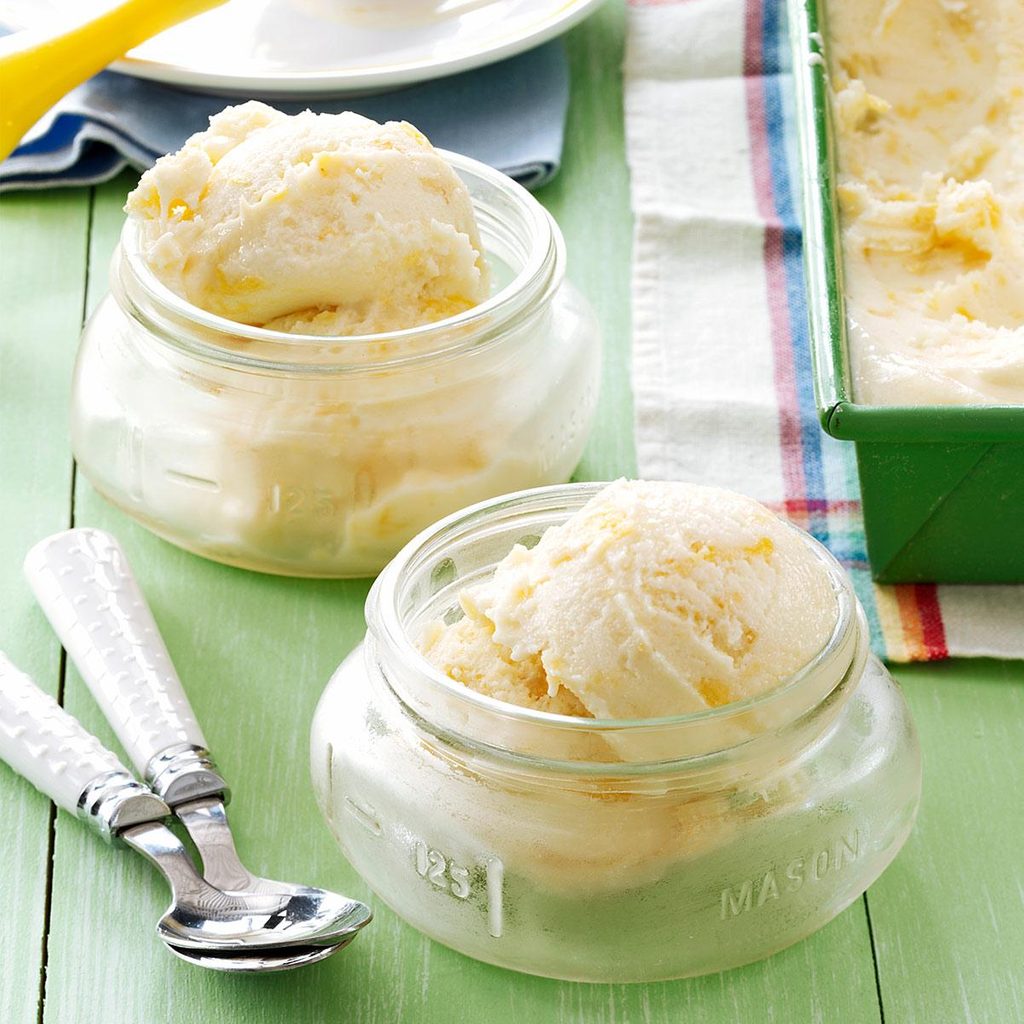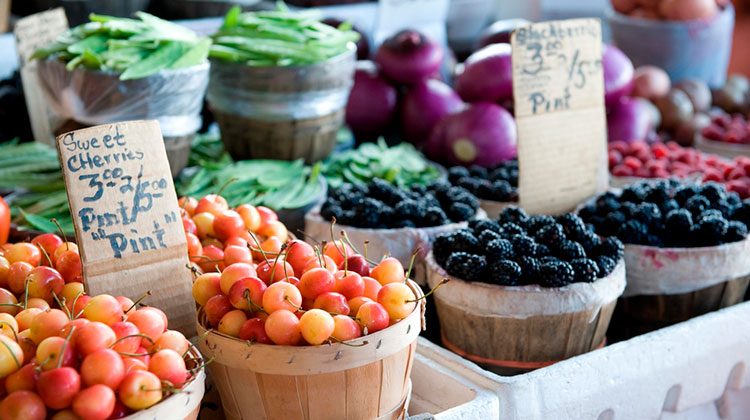
We all have favorite fruits and vegetables that we can’t seem to get enough of during summer. By winter we start to miss ’em, especially when it’s near-impossible to get our hands on the good stuff. Luckily, many fleeting summer foods are freezeable. So stock up on that summer harvest! You can find our basic freezer tips here, plus the best ways to freeze all sorts of produce below.
Asparagus
Ready to harvest in early summer, oh so good year-round. To freeze asparagus, wash the stems thoroughly, then blanch them in boiling water for a few minutes, until tender when pierced with a knife. Drop them in an ice bath to cool quickly. To keep them from sticking together, place them in a single layer on a baking sheet and freeze for one to two hours. Transfer to freezer bags. Blanched asparagus will keep in the freezer for up to a year. (Here’s the best way to prep fresh asparagus.)
Avocados
You can freeze avocados, but they’ll lose some of their buttery creaminess. The best way to freeze an avocado is in puree form. Puree with lemon or lime juice and freeze in tightly sealed containers. It may not taste fresh enough to be avocado toast-worthy, but you can use them in smoothies, baby food or salad dressings. (Here are more delish avocado recipes.)
Bananas
Ripe bananas freeze very well. Peel off the skins and freeze in freezer bags. Next time you’re ready to make a smoothie, plop one in for extra creaminess. They’re also great in banana bread and other treats.
Berries
Most berries freeze like a dream. Think strawberries, blueberries, blackberries and raspberries. For the most part, they don’t lose too much flavor or texture, so frozen fruits taste great atop yogurt or oatmeal, whirred into smoothies or baked into a pie or crumble. To ensure they don’t clump, spread them on a baking tray lined with parchment paper and freeze in a single layer. Once firm, toss into bags to store.
Corn
Ah, sweet summer corn! Corn freezes best off the cob. Use a sharp knife to shave off the kernels and freeze them in a tightly sealed bag. They’re easy to toss into a skillet for a quick side dish, or to stir into soup.
Dark Leafy Greens
Dark greens such as kale, spinach and chard do well in the freezer. (They are superfoods, after all!) Blanch in boiling water, shock in a bowl of ice water, then squeeze out as much of the water as possible. Pack into tight small balls and store in freezer bags. Thaw before adding to stir-fries, soups or sautes.
Fresh Herbs
While drying herbs is the most common way to preserve them, freezing them in ice cube trays is another genius way of saving your bounty. Finely chop the herbs, place them in ice trays, cover with olive oil or water, and freeze. You can keep them in the trays and cover with plastic wrap, or remove them and store the cubes in a freezer bag. Frozen herbs are great to drop in sauces, soups and stews. (We’ve got another 50-plus ideas here.)
ⓘ
Ginger
Bought more ginger than you need for tonight’s stir-fry? You can freeze the rest. Peel the ginger, wrap tightly and store in a freezer bag. Bonus: ginger is easier to grate when frozen.
Grapes
Frozen grapes make the best snack! If you don’t believe me, you’ll have to try for yourself. To freeze grapes, wash, let dry thoroughly, and spread out on a baking sheet to freeze overnight. Transfer frozen grapes to an airtight container or bag. Grab a handful for a quick, frosty snack.
Green Beans and Peas
Green beans and peas freeze well, retaining their snap and crunch even after a few months under frost. Wash, drop in boiling water, drain and cool quickly in a bowl of ice water. (For peas, shell before blanching.) Then freeze in bags. Toss green beans right into a skillet or another tasty recipe to heat them back up.
Lemons and Limes
You can freeze the zest of lemons and limes in an airtight container. For the juice, squeeze into ice cube trays and freeze. Alternatively, you can quarter lemons and freeze them tightly wrapped. The thawed lemons may be a little mushy, but their juice will be fine.
Peppers
Peppers lose a bit of pep if frozen raw, but they’ll still taste delicious on top of a pizza or in a stir-fry. (Just wash and chop or slice the raw peppers before freezing.) Roasted peppers freeze very well. Roast halved peppers until soft, peel away the skins and seeds and freeze the peppers in an airtight container. Pour in any roasting juices; these will help preserve the tender texture.
Rhubarb
If you’re ever craving rhubarb in winter for those delicious cobblers and pies, you’ll be thankful to know that you can indeed freeze it. All you need to do is wash and peel the tough outer skin of the rhubarb, remove the ends, and dice into small pieces. Store in freezer bags. Pro tip: if you always make a particular rhubarb recipe, bag up the exact quantity of rhubarb needed for one batch, and feel like a genius at prep time!
Stone Fruits
Stone fruits such as peaches, nectarines and cherries also freeze well. For fruits with a thicker skin, peel first and slice into quarters before freezing. This makes thawing speedier. For cherries and other fruits without noticeable skins, remove the pit or stone before freezing on a baking sheet.
Tomatoes
While tomatoes are usually canned for storing, the process can be a bit tedious. If you don’t feel like standing over a boiling pot, you can freeze tomatoes. For a classic method, quickly blanch in boiling water, shock in ice water, and peel the skins. Freeze the results, and they’ll be ready to use in your next sauce, soup or stew. You can also freeze whole tomatoes, skin on-just wash them and pop them, double-bagged, in the freezer. Frozen tomatoes are best for cooking, not for slicing into a tomato sandwich. You can also roast tomatoes in big batches, then freeze in bags or jars.
Zucchini
You can freeze zucchini, but it’s very watery, so it doesn’t freeze well unless prepared correctly. Chop zucchini and blanch in boiling water for a couple minutes. Blanching deactivates the enzymes that would otherwise make the zucchini mushy and discolored. Freeze zucchini in a single layer on a baking sheet lined with a silicone mat; transfer to a freezer bag or container once frozen. You can also freeze raw grated zucchini to add moisture to baking batter, like in this zucchini bread.
With a freezer full of produce, you’ll be able to enjoy a taste of summer all year long!
Farmers Market Recipes
Grilled Peach, Rice & Arugula Salad
This hearty salad was created when I needed to clear out some leftovers from the fridge—and it became an instant hit! The grilled peaches are the ultimate "tastes like summer" salad booster. —Lauren Wyler, Dripping Springs, Texas
Get Recipe
Tomato GaletteI found beautiful heirloom tomatoes and had to show them off. In this easy galette, the tomatoes are tangy and the crust is beyond buttery. —Jessica Chang, Playa Vista, California
Rhubarb Upside-Down CakeUpside-down cakes always bring a little wow factor to baking, but this rhubarb upside-down cake brings some surprises too. It’s juicy, tart, sweet and a world away from everything you probably expect from rhubarb.
Fresh Sugar Snap Pea SaladWe found fresh sugar snap peas at our town's farmers market. They make a cheerful salad with a tangy dressing. —Courtney Stultz, Weir, Kansas
Blueberry-Dijon ChickenBlueberries and chicken may seem like a strange combination, but prepare to be pleasantly surprised. I add a sprinkling of minced fresh basil as the finishing touch. —Susan Marshall, Colorado Springs, Colorado
Flamboyant Flamenco Summer SaladI came up with this salad simply by choosing the best-looking vegetables at a local farmers market—the colors are so beautiful! Turn it into a full vegetarian meal by adding roasted garbanzo beans or cooked white beans as protein. —Crystal Schlueter, Northglenn, Colorado
Sausage RatatouilleYou’ll feel like a great chef when you serve this veggie-packed dish party guests will rave about. Don’t let the ingredient list fool you: Pantry staples and an easy-cook method make this one a cinch. —Janine Freeman, Blaine, Washington
Black Eyed Pea SaladThis eye-catching black eyed pea salad is packed with nutrient-dense ingredients for a healthy dish that's ready for weeknights or picnics.
Veggie EnchiladasThese vegetarian enchiladas use a lot of garden favorites in a quick weeknight meal. Feel free to substitute with whatever vegetables you have from your garden: yellow summer squash, eggplant and corn—all taste great! —Elisabeth Larsen, Pleasant Grv, Utah
Cherry-Almond Streusel TartBrimming with fresh cherries and topped with a crunchy streusel, this tempting tart is a great way to end dinner on a sweet note. It's elegant, tastes delicious, and is so easy to make. —Marion Lee, Mount Hope, Ontario
Sausage and Swiss Chard PastaI whipped up lunch with fresh produce from the farmers market, and the result was amazing. The pasta absorbs the cooking liquid quickly, so serve immediately to guarantee the best texture. —Kate Stiltner, Grand Rapids, Michigan
Freezer Sweet CornPeople ask me how to freeze corn on the cob because my frozen corn tastes as good as fresh! This way it stays crisp-tender and now I can have "fresh" corn any time of the year. —Judy Oudekerk, St. Michael, Minnesota
Cucumber-Stuffed Cherry TomatoesBesides being tasty, these little tomato poppers are extra awesome because you can make them ahead of time. At parties, I often triple the recipe because they disappear fast. —Christi Martin, Elko, Nevada
Zucchini Pizza CasseroleA hearty tomato-meat sauce, garden-fresh zucchini and oodles of cheese make this zucchini pizza casserole the ultimate family-friendly dinner recipe.
Watermelon and Spinach SaladSummer's the perfect time to toss up this watermelon salad. You'd never expect it, but spinach is awesome here. Eat it and feel cool on even the hottest days. —Marjorie Au, Honolulu, Hawaii
Peach Cobbler RecipeThe first step to making peach cobbler? You have to choose perfect peaches. We'll walk you through the recipe.
Balsamic Three-Bean SaladHere's my little girl's favorite salad. She devours it just about as fast as I can make it. I suggest preparing it ahead of time so the flavors can get to know each other. —Stacey Feather, Jay, Oklahoma
Raspberry Peach JamWhen my jam won a first-place pink ribbon at our local county fair, I was overjoyed but it's not the highest compliment that recipe has received. Two girlfriends that I share it with tell me if they don't hide the jam from their husbands and children, they'll devour an entire jarful at just a sitting! —Patricia Larsen, Leslieville, Alberta
Buttery Horseradish Corn on the CobFor a July Fourth barbecue, I whipped up a butter and horseradish topping for grilled corn. People actually formed a line to get seconds. —Trish Loewen, Bakersfield, California
Grilled Sausages with Summer VegetablesAfter 30 years of camping, we've come up with an arsenal of surefire recipes. Our grilled sausage with veggies would be a superstar at a potluck. —Nancy Daugherty, Cortland, Ohio
Sweet & Sour Squash SaladThis salad goes over really well with all ages, and it's a good way to get kids to eat summer squash. —Opal Shipman Levelland, Texas
Blueberry Pie with Graham Cracker CrustWe live in blueberry country and this pie is a perfect way to showcase the luscious berries. A neighbor made this pie for us when we had a death in the family several years ago. Our whole family enjoys it. —R. Ricks, Kalamazoo, Michigan
Refreshing Rhubarb Ice CreamNo matter where my military family is stationed, this ice cream always makes me think of my parents’ backyard rhubarb patch in Rochester, New York. —Rachel Garcia, Honolulu, Hawaii
Dill Garden SaladI love to cut up whatever fresh vegetables I have on hand and toss them with this delicious dressing and fresh dill. This salad shows up on our table regularly during the summer. —Bethany Martin, Lewisburg, Pennsylvania
Farmers Market PastaWhen we moved into our house, little did we know that we had a wild asparagus patch. For decades, that little patch has given us plenty of asparagus. This recipe can be used almost any time of year, with almost any assortment of vegetables the season has to offer. By cooking without butter or oil, you can cut fat and calories, but the flavors are still there. —Wendy Ball, Battle Creek, Michigan
Spinach-Basil PestoToss this rich, garlicky pesto with pasta or use as a spread. It also freezes well for fresh flavor over the winter. —Jaye Beeler, Grand Rapids, Michigan
Refrigerator Garden PicklesCanning isn't necessary for these crisp-tender, tangy pickles. Keep them in the fridge and eat them up within a month. —Linda Chapman, Meriden, Iowa
Peach SmoothieThe best things in life really can be the simplest. This peach smoothie uses just a few ingredients but tastes complex and delicious.
Tomatoes with Buttermilk VinaigretteWe make the most of tomatoes when they are in season and plentiful, and I love an old-fashioned homemade dressing with summery taste. —Judith Foreman, Alexandria, Virginia
Grilled Nectarine & Cheese CrostiniAt our house, we love the summer tastes of sweet grilled nectarines and fresh basil over goat cheese. I can usually find all the ingredients at the farmers market. —Brandy Hollingshead, Grass Valley, California
Jumbleberry CrumbleA friend brought this delicious, down-home dessert to church and was kind enough to give out the recipe. Everyone enjoyed it so much and just showered her with compliments! It’s especially wonderful served warm or with a dollop of creamy whipped topping. —Mary Ann Dell, Phoenixville, Pennsylvania
Garden-Stuffed Zucchini BoatsNot only are these boats a delightful way to get your veggies, they're basically a one-dish meal that covers all the bases—just grab your favorite garden goodies and add any spices or mix-ins you like. —Janie Zirbser, Mullica Hill, New Jersey
Corn SalsaThis simple corn salsa is a celebration of summer produce.
Heirloom Tomato & Zucchini SaladTomato wedges give this salad a juicy bite. It's a great use of fresh herbs and veggies from your own garden or the farmers market. —Matthew Hass, Franklin, Wisconsin
Blueberry-Rhubarb CrumbleA dollop of whipped topping adds a nice finishing touch to this satisfying crumble. Sometimes I drizzle a little flavored coffee creamer on top instead of the whipped topping. —Nancy Sousley, Lafayette, Indiana
Strawberry Watermelon SlushWe like to relax on the back porch with glasses of my slush after a long, hot day. Strawberries and watermelon blend up with lemon juice and sugar for an instant refresher. —Patty Howse, Great Falls, Montana
Teriyaki Shish KabobsWhen I was a teenager, my father worked for an airline, and my family lived on the island of Guam in the South Pacific. A friend of my mother gave her this tangy-sweet recipe, and we enjoyed it often. Now I make it for my family, and they're big fans as well. —Suzanne Pelegrin, Ocala, Florida
Raspberry Custard KuchenBack where I grew up in Wisconsin, people have been baking this German treat for generations. We love it for breakfast or as a special dessert. It's no fuss to fix and impressive to serve. —Virginia Arndt, Sequim, Washington
Stuffed Sweet Onions with BaconThis unexpected side dish is perfect to serve alongside grilled steak or pork chops. Even if you're not an onion fan, the low heat and long cooking time of this dish mellows and sweetens the sometimes sharp raw onion flavors that many dislike.—Erin Chilcoat, Smithtown, New York
Grilled Pork with Avocado SalsaI love the zesty taste of this moist grilled tenderloin. The cumin, avocado and jalapeno give it southwestern flair. It's an easy, elegant way to prepare pork. —Josephine Devereaux Piro, Easton, Pennsylvania
Colorful Quinoa SaladMy youngest daughter recently learned she has to avoid gluten, dairy and eggs, which gave me a new challenge in the kitchen. I put this dish together as a side we could all share. We love it for leftovers too. —Catherine Turnbull, Burlington, Ontario
Yellow Squash & Watermelon SaladI always like to bring this healthy option to parties and potlucks, and people seem to really appreciate that. No oil is necessary for this salad; the lemon juice combines with the feta to lightly coat the bright, fresh ingredients. —Camille Parker, Chicago, Illinois
Spicy Chunky SalsaVinegar adds a refreshing tang to this sweet tomato salsa. It's wonderful as is, but for more heat, leave in some hot pepper seeds. —Donna Goutermont, Sequim, Washington
Mediterranean Cobb SaladI'm a huge fan of taking classic dishes and adding some flair to them. I also like to change up heavier dishes, like the classic Cobb salad. I've replaced typical chicken with crunchy falafel that's just as satisfying. —Jenn Tidwell, Fair Oaks, California
Grilled Honey-Balsamic Glazed FruitOne summer my mother-in-law made us grilled peaches basted with a sweet and tangy sauce. These are so good I'm always tempted to eat the whole batch. —Kristin Van Dyken, West Richland, Washington
Green Bean SaladThis cold green bean salad makes the perfect side dish, starring green beans, a simple vinaigrette and feta cheese.
Blueberry-Blackberry Rustic TartMy dad would always stop our car on the side of the road in Maine and say, "I smell blueberries." He had a pail ready. Then Mom would bake the wild berries in a cornmeal crust to make this homey tart. —Priscilla Gilbert, Indian Harbour Beach, Florida
Raspberry Pie SquaresMaking pie for a crowd may seem impossible, but not when you turn to this crowd-pleasing recipe! The sweet-tart raspberry filling pairs well with a flaky homemade pastry. —Taste of Home Test Kitchen
Corn with Cilantro-Lime ButterI like to use fresh cilantro from my garden in this lime butter I created especially for grilled corn. —Andrea Reynolds, Westlake, Ohio
Zucchini CupcakesI asked my grandmother for this recipe after trying these irresistible spice cupcakes at her home. I love their creamy caramel frosting. They're such a scrumptious dessert, you actually forget you're eating your vegetables, too! —Virginia Lapierre, Greensboro Bend, Vermont
Crisp Cucumber SalsaThis cucumber salsa is a fantastic way to use cucumbers, combining their crunchy texture and super fresh flavor with tomatoes, hot peppers, herbs and more, mixed up with a tasty dressing.
Minty Watermelon-Cucumber SaladCapturing the fantastic flavors of summer, this refreshing, beautiful watermelon-cucumber salad will be the talk of any picnic or potluck. —Roblynn Hunnisett, Guelph, Ontario
Quick Watermelon CoolerSummer means cooling off with a slice of watermelon and a glass of cold lemonade. This combines two favorites in one. —Darlene Brenden, Salem, Oregon
Georgia Peach Ice CreamMy state is well known for growing amazing peaches. This ice cream has been a family favorite for more than 50 years! —Marguerite Ethridge, Americus, Georgia
























